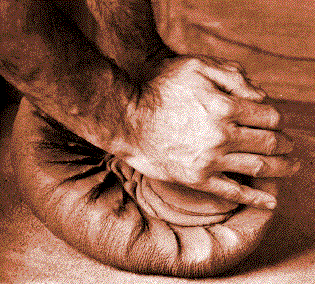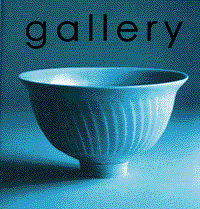ART 189-GRADING CONTRACT:
You will be graded based upon your successful completion of the work
specified in your contract. By the third class meeting, turn in to me your
proposal. Avoid the common mistakes of a contract that is either overly
ambitious or woefully inadequate. I will review the proposed contract and
return them to you with comments if revisions are necessary. Projects must
be turned on the due date. Any requests for an alternate date must be arranged
in advance.
WORK IN PROGRESS CRITIQUE : (20% of your grade). One week before mid
term there will be a work in progress critique for 189 students. At this
time you should have approximately one-half of your contract work completed.
You may also show leatherhard and bisque ware but I expect to see finished
work as well. See the calendar below for the exact dates for grading for
your particular section.
WRITTEN PAPER: (30% of your grade). A typewritten, five page paper
is due at mid term (see calendar below for exact date for your section).
This paper is to be a gallery report based on your visiting a local museum
or gallery. The paper should include a description of the show, such as
the media used, techniques explored, as well as a discussion of the artist's
philosophy. You should also relate the work to the continuing ceramic tradition.
What innovations, if any, has this artist contributed? I am interested in
developing your powers or written analysis, not in determining how well
you can copy material from a book. Please don't insult me (and short change
yourself) by turning in a paper taken verbatim from a reference book. It
will be obvious to me and your grade will suffer. If you wish to quote an
author, follow standard practice and use quotation marks. Illustrations
may be used, and are encouraged, but do not count towards the 5 page minimum.
FINAL PROJECTS: (30% of your grade). One week before final week, final
projects are due for critique from all 189 students. Since you are firing
much of your own work, I expect you to plan your firing schedules so that
you can complete the work by the grading date (see calendar below for the
exact date).
KILN FIRING REQUIREMENT: (10% of your grade): You will be expected
to work with the lab assistants to load and fire at least one kiln with
your own work. This should be a glaze firing, high or low fire depending
on your contract. See Mark Poore to schedule a kiln. You may choose to work
with another student for a firing if you feel you cannot fill a kiln by
yourself. If the schedule permits (and it often does), you may be able to
do more than one firing. Should you reserve a kiln, and then not show up
to load or fire, you will not be able to reserve another kiln all semester
as a penalty.
IF YOU NEED TO RESCHEDULE YOUR KILN RESERVATION, YOU MUST DO SO AT
LEAST 48 HOURS IN ADVANCE, SO WE CAN LET ANOTHER STUDENT USE THAT TIME SLOT.
CLASS PARTICIPATION: (10% of your grade): This portion of your grade
will be based on your class attendance and on your completion of your clean
up assignments. To summarize:
WORK IN PROGRESS CRIT 20%
WRITTEN PAPER 30%
KILN FIRING PROJECT 10%
CLASS PARTICIPATION 10%
FINAL PROJECTS 30%
KILN SIGN UP PROCEDURES and FIRING GUIDELINES
1. Students must be currently enrolled in Art-189
2. Students must reserve the kiln in advance. See Mark Poore or Roger
Porter.
3. Students must make up their own cone pads. Cone pads should be
made up at least one day in advance.
4. Students must be here at 8:00 a.m. on the day to fire and return
at 10:00 a.m. the next working day to unload.
5. Students must be here the for the entire firing.
6. Students may share a firing with other students. If you share a
load, make sure you share all responsibilities amongst yourselves. The Lab
Assistants will not fire the kiln for you.
7. Students that have reserved the kiln and can not make it on that day must let Richard or Roger know at least 24 hours in advance.
8. Students that have reserved the kiln and do not show up without
letting us know will lose all kiln privileges.
9. Students are responsible for the kiln and kiln furniture. Shelves
are to be ground as needed. Shelves ruined by student fired work are to
be paid for by the parties responsible.
10. After unloading the kiln, students must put all furniture away
and sweep up the kiln area. | 


